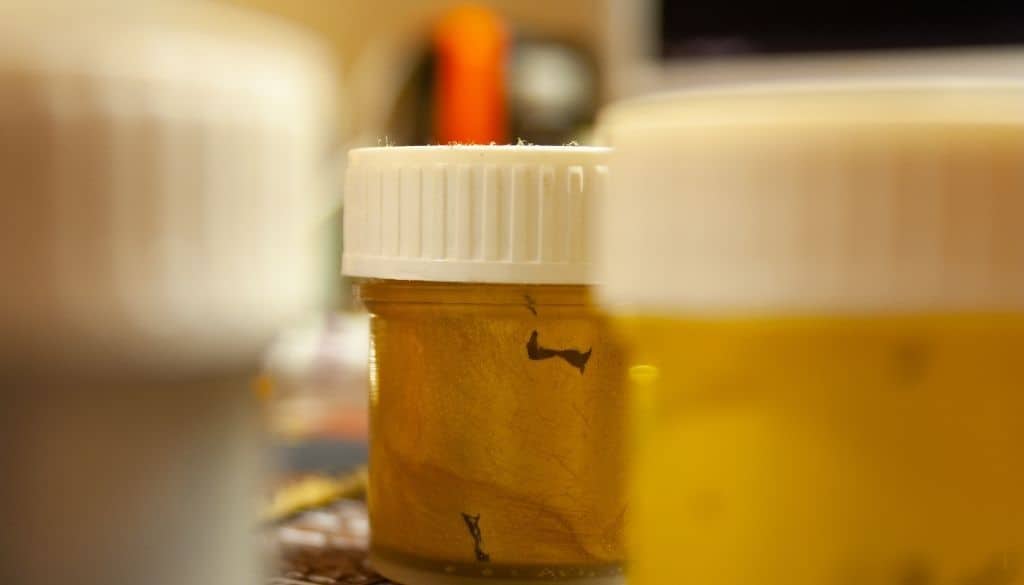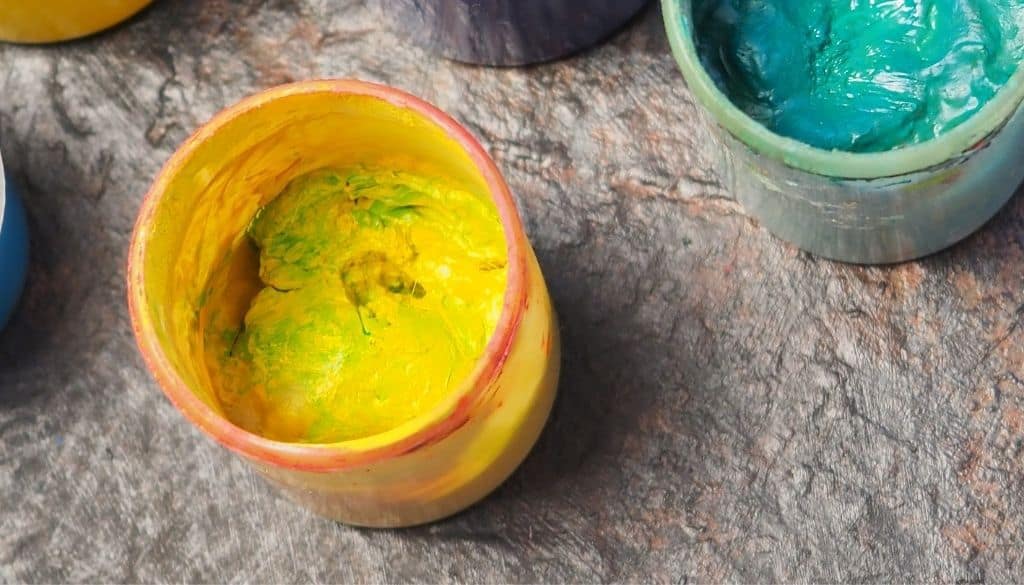I love Acrylic mediums and are definitely my by far favorite way of expressing my feelings on canvas or any other surface. In this post, I am going to research if acrylic paint expire at some point or maybe my art will last for decades.

Will acrylic paint expire at some point?
Technically, because it is a synthetic material, acrylic paint doesn’t expire. However, there are a variety of ways that acrylic paint can degrade and get destroyed without even being opened. This largely has to do with environmental factors, like being exposed to extreme heat or cold.
These extremes will likely permanently change the chemical makeup of the paint, causing the emulsion (the mixture of two substances that would not normally mix) to separate even if it’s never been opened or used.
If acrylic paint is left in an unopened, airtight container in ideal conditions, it can, in theory, last decades.
If you already have art painted with acrylic paint, you would find interesting my closely-related post: How long does Acrylic painting last?
How long does acrylic paint last once opened?
The shelf life after opening can be anywhere from 5 to 10 years, although this is dependent on the quality of the paints and how well it’s stored. Once opened, there are several things that can go wrong, but the most common issues (aside from emulsion separation) are contamination and drying.
Bacteria contamination
When bacteria contaminate the paint, it will grow mold, and the leftover paint will get a sour or rotten smell. It can also appear clumpy, almost curdled.
Drying
Drying is more obvious- the paint will either have a crust or shell of dried paint at the surface or will be completely dry all the way through.
Some manufacturers will list their paint shelf life on their websites or directly on their products, so you can check for that as well; this shelf-life estimate is under the assumption that you are storing your paints in ideal conditions.

Can you use expired acrylic paint?
This depends on two main factors: how the paint has degraded, and how long the degradation has occurred. If the paint is moldy, then you should not use the paint at all; dispose of it as you would toxic waste.
Here are some examples, when acrylic paint go bad and can still be used.
Temperature Exposure
If you have stirred or mixed the paint, and there are clumps that won’t disappear with more mixing, the paint has likely been exposed to high or low temperatures and the chemical makeup has started to change (but has not completely changed).
You can still use this paint, but the texture and pigment might be unpredictable, so test it before using it for an important painting.
Dry Paint
If the paint is dry, make sure to check if it is dry all the way through- if it has a dry crust or shell, you can peel this off (or poke a hole through if the container is a small tube or bottle) and use the wet paint inside like normal.
Paint that is dry all the way through can still be used, but it will take more effort to revive it. If you aren’t sure if the paint is too old, test it out first! If it doesn’t behave (or smell) like acrylic paint should, then it’s probably expired.
How do you fix or improve old acrylic paint?
Never try to improve paint that is rotten or moldy, regardless of any other issue it may have. Any other type of problem is safe to attempt to fix, but moldy paint is hazardous to your health.
Improving bad texture
If the paint has impurities, like bumps from temperature differences, you can strain it with a paint strainer (or you can try a mesh strainer you have at home) to get the larger lumps out of the paint to improve the texture.
[amazon bestseller=”paint strainer” items=”3″ template=”table”]
Fixing dry paint
If the paint is completely dried out and wasn’t exposed to fresh air, then there is the possibility that you can add tap water to re-hydrate the paint, but this depends on the quality of the paint. It will be much easier if you own artist-quality acrylics.
It is always worth trying since the process is fairly simple;
- start by adding a small amount of dry paint to a separate container or surface
- slowly add a little bit of warm water. It is better to use less water, to begin with to avoid thinning out the paint too much
- spread the water over the paint with a brush and let it rest for a minute or two.
- If the water has started to change color, keep adding warm water a few drops at a time. The mixing ratio should be approximately one part water to one part acrylic paint.
- Once you have achieved this ratio, start to gently mix the paint until it has reached its original consistency
- If there is still too much dry paint in the mixture, add a little more water, and let it sit again before continuing to mix the paint until it reaches a normal paint consistency.
NOTE: There might be some bits that won’t mix at all because they have been chemically altered from air exposure, and these can be filtered out with a paint strainer or picked out with a paintbrush or toothpick.
If none of the paint mixes with the water at all, then it has become water-resistant and is a lost cause. Rehydrated paint should look and act just as normal acrylic paint would. The main problem people run into with rehydrating paint is diluting it too much, so be patient when adding water. Rehydrated paint isn’t able to be stored, so only mix as much paint as you need at a time.
How do you store and extend the shelf life of acrylic paint?
Acrylic paint will last the longest when stored indoors, away from sunlight, with a room temperature that stays anywhere around 65-75°F (18-23°C).
Avoid drying and contaminants
The paint containers themselves should be as airtight as possible. Ensure caps on tubes are screwed on tightly, and if the paint is in a can, make sure to hammer down the lid after each use; plumber’s tape is useful for sealing screw-on lids.
As an additional precaution, it is a good idea to store the paint containers in a larger airtight container to reduce the possibility of contact with fresh air or contaminants. In the case of a damaged paint container, find an airtight household object you can pour the paint into for safe storage, like a canning jar or water bottle.
NOTE: Some people even add glycerin in small amounts to slow drying time, but this is not recommended, since it will change the overall properties of the paint.
Related post you might consider reading: How to store canvas paintings?
Avoid mold
In order to avoid mold, store your paint away from areas with high moisture content. Avoid areas near running water, exposed wood or concrete, a working furnace, near doors that lead outside, or rooms where laundry is washed or dried.
There is also the possibility of adding mold inhibitors directly to the paint for long-term storage, and silicone moisture-absorbing packets can be placed in larger containers.
All of these considerations become more important the longer you store your paint without using it. If you paint frequently and go through paint quickly once opened, then the most important storage guideline to adhere to is to make sure the paint is not exposed to high or low temperatures, since emulsion separation is the one problem that doesn’t need a long time to set in, and is irreversible.
TIP: It is helpful to write the purchase date directly on the paint container so you have an accurate idea of how long your paint has been stored.
Oil paint lasts much longer than acrylic paint. When oil paint is stored properly, it can have a shelf life up to 40 years, even after it has been opened. This is because it is less likely to dry out; the most common problem is that the oil will, over long periods of time, separate from the pigment on its own. This does not happen with acrylic paint that is stored properly- acrylic paint will dry out long before the emulsion separates.

